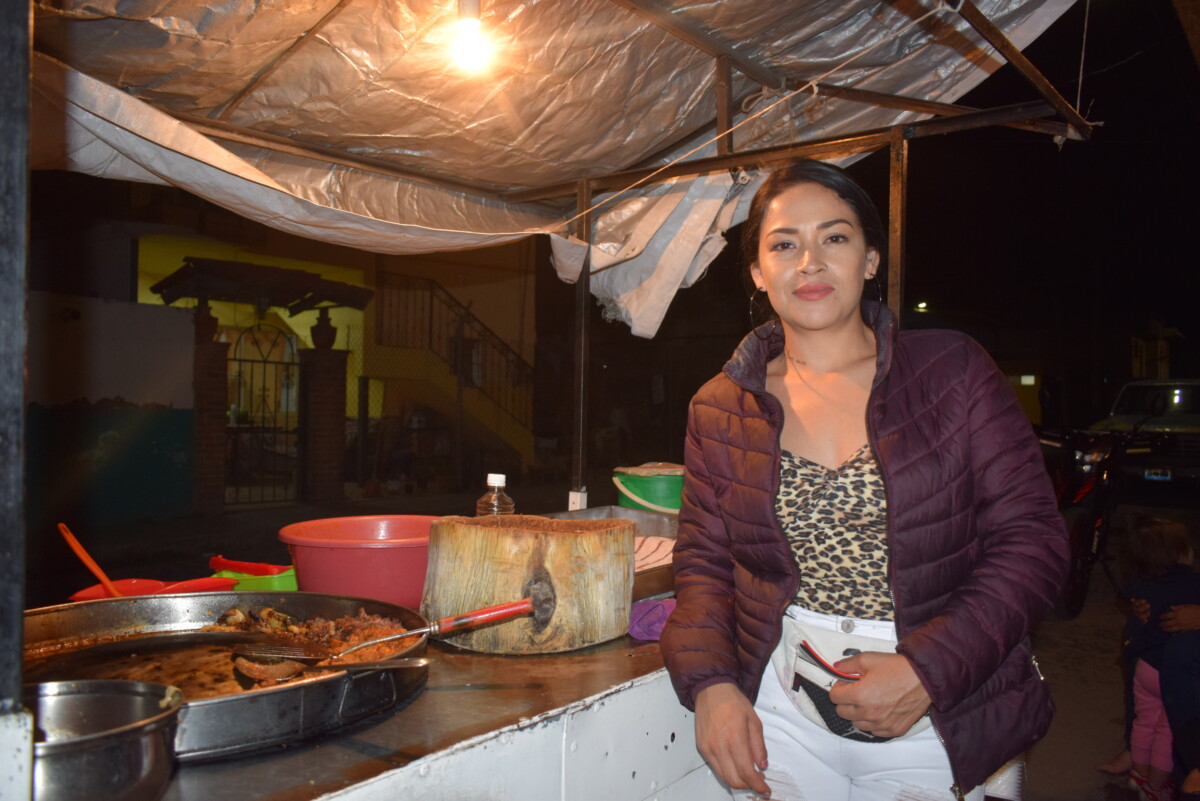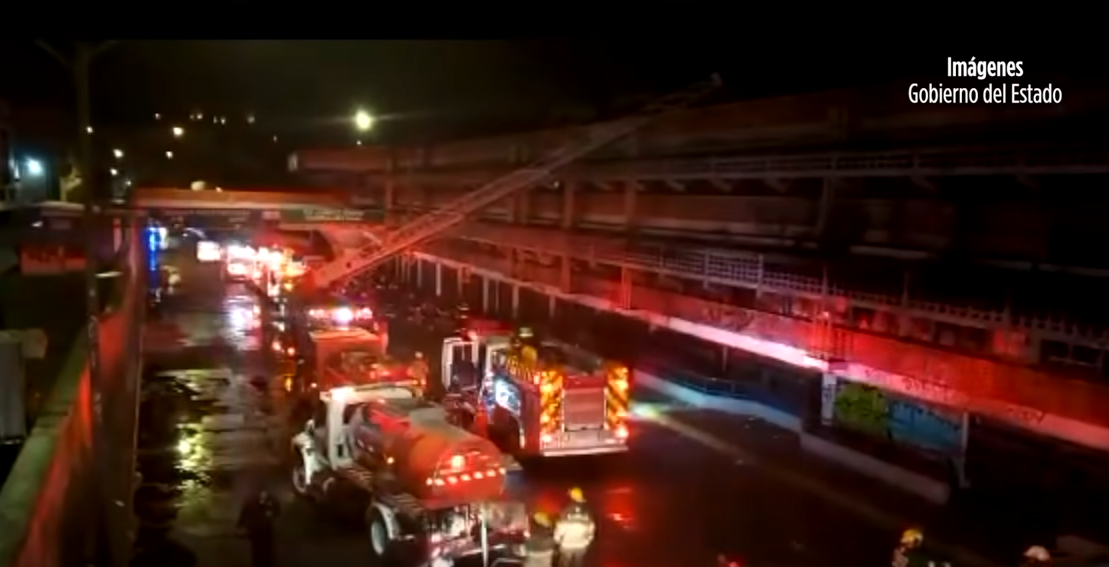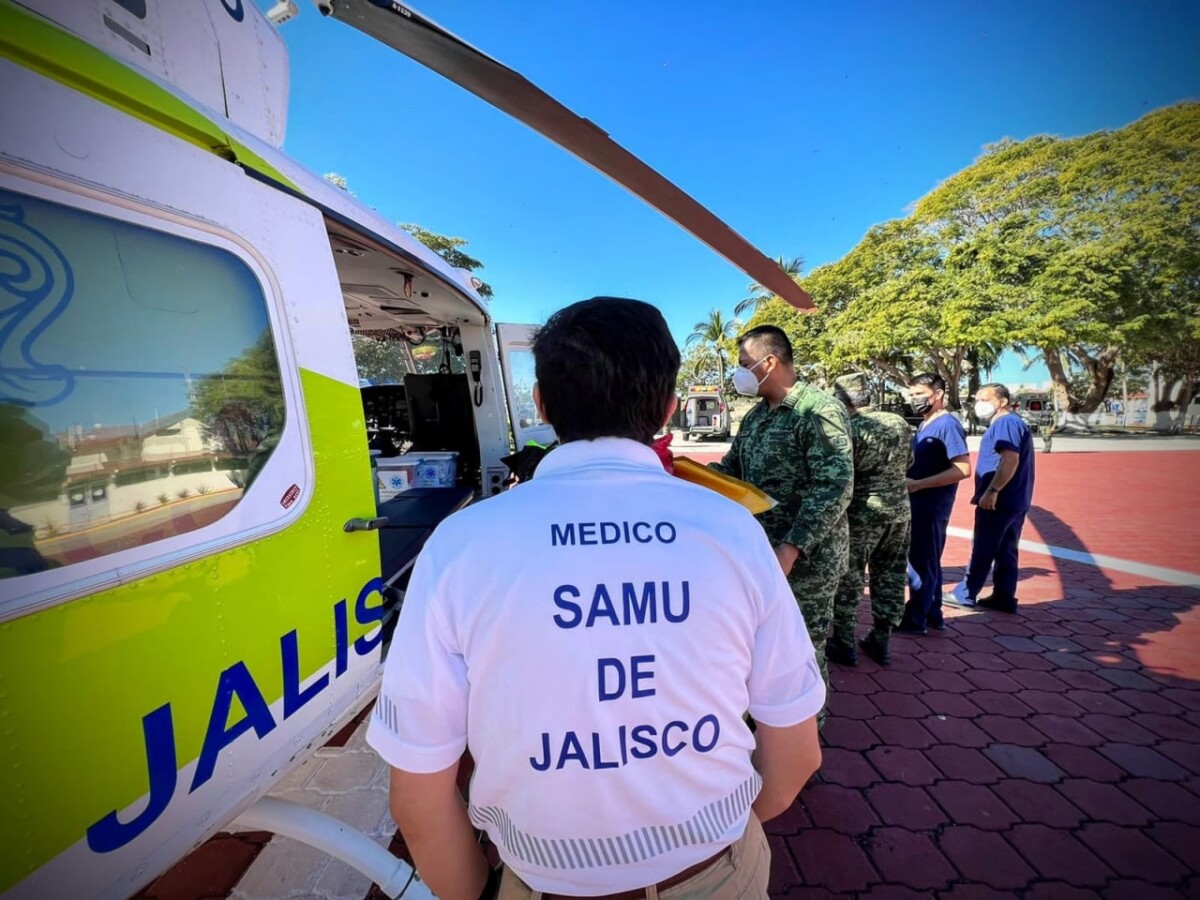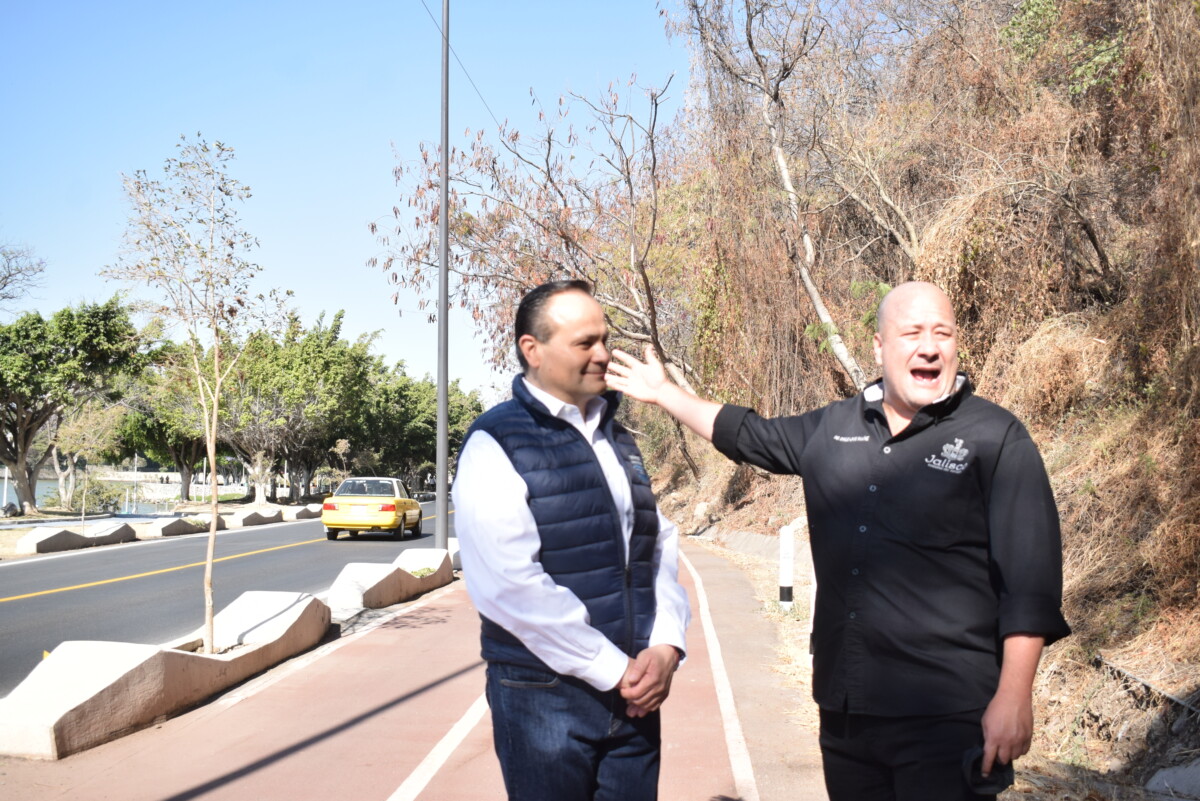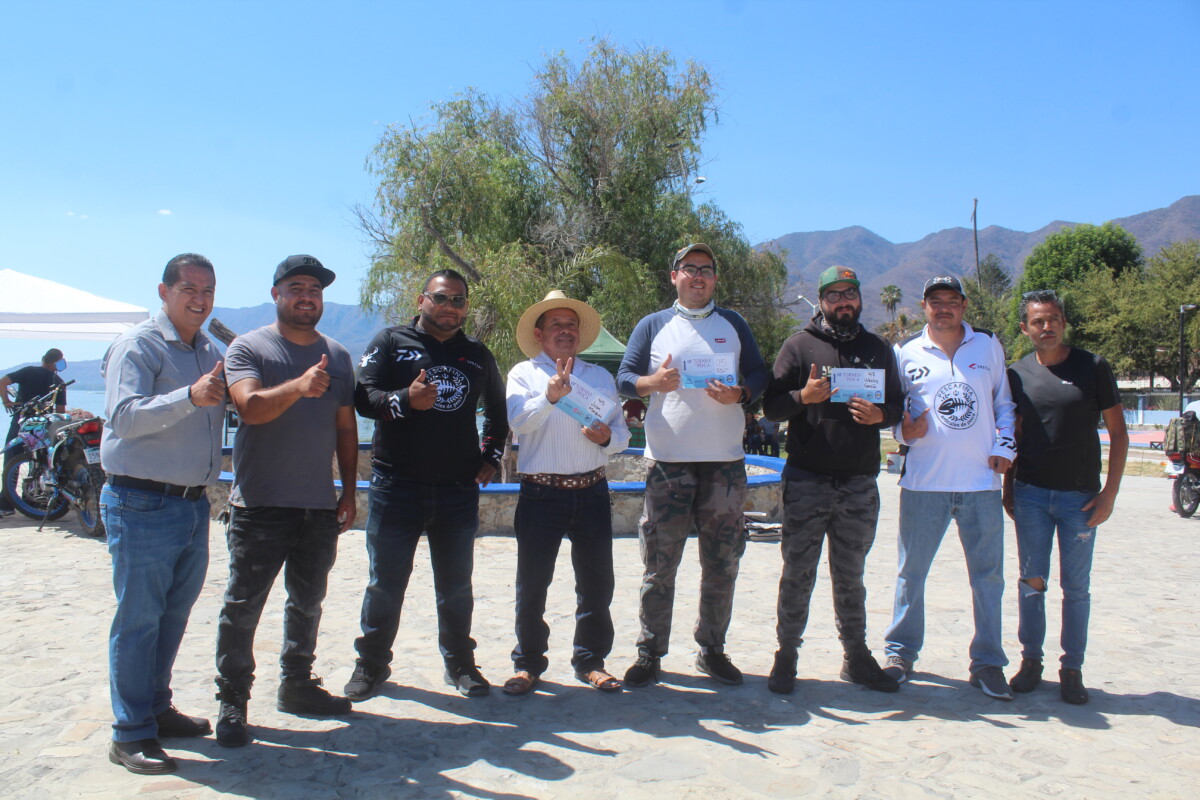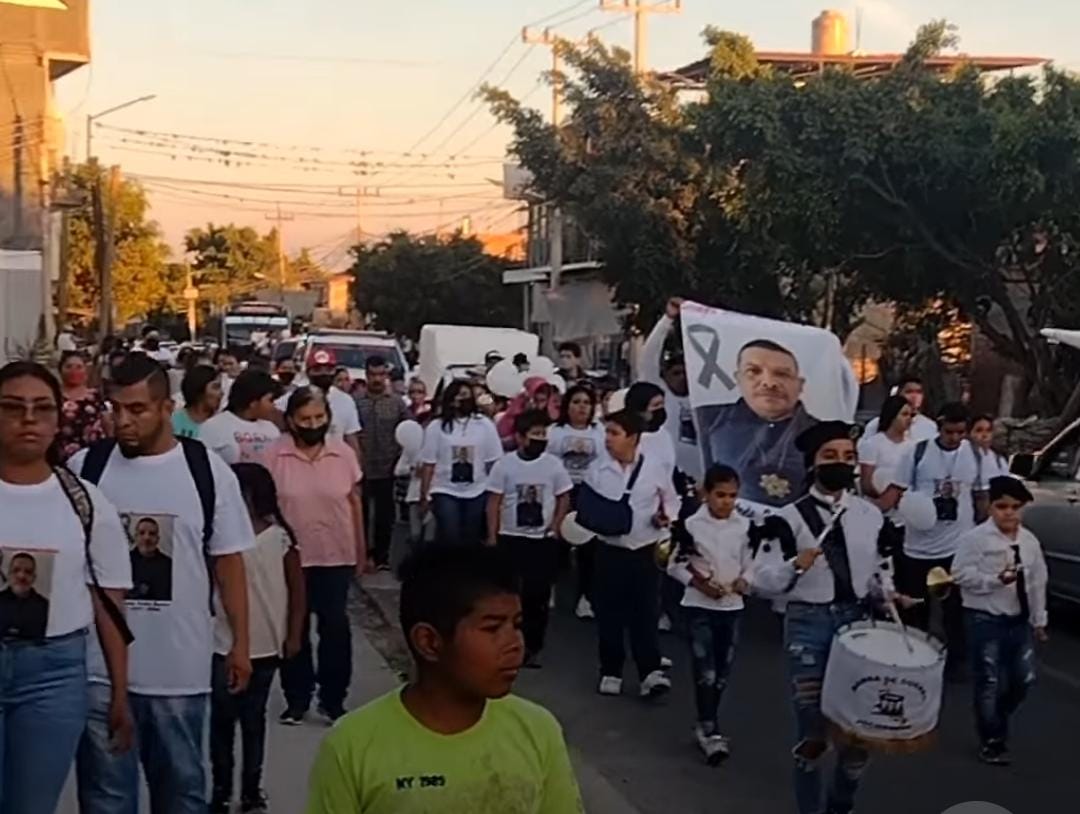gente
Reabren más de 2 mil locales tras incendio en Mercado San Juan de Dios
Desde el pasado domingo, el alcalde de Guadalajara, Pablo Lemus, acompañó a los comerciantes en la reapertura de los locales. Foto: Facebook.
Redacción.- Tras el avance de los trabajos de limpieza y reacondicionamiento por el incendio registrado en el Mercado Libertad o San Juan de Dios, el pasado jueves 31 de marzo, más de 2 mil locales ya reanudaron operaciones.
Más del 70 por ciento de los comercios del inmueble reanudaron sus labores; 500 abrieron el domingo y más de mil 500 se sumaron durante el lunes.
Al respecto, el presidente municipal de Guadalajara, Pablo Lemus Navarro, informó que un total de 2 mil 40 locales, de los más de 3 mil existentes, ya abrieron, mientras que los más afectados por las llamas serán reubicados temporalmente.
“Iniciamos el confinamiento de la zona incendiada, que está prácticamente limpia, para poder iniciar los trabajos de reconstrucción. No es sencillo porque tenemos que seguir un proceso de licitación para poder asignar esta obra y esperamos iniciar los trabajos de reconstrucción en máximo 10 días; estamos calculando que pudieran tardar entre 4 y 6 meses”, declaró Lemus.
Este martes inició la reubicación de los espacios afectados por el fuego a la explanada central, los baquetones y parte del estacionamiento del Mercado San Juan de Dios; la plaza de La Estampida y la plaza que se encuentra sobre la calzada Independencia.
Asimismo, se anunció el arranque de la entrega de apoyos económicos que ascienden a 25 mil pesos a los comerciantes afectados de los 426 locales consumidos por el incendio. Serán 10 millones de pesos los destinados por el Gobierno de Guadalajara para este rubro.
Tacos Diana: Preserving a family recipe and sustaining a family
Diana Ramos in front of her stand serving customers during the evening of Tuesday, March 29. Photo: Jazmín Stengel.
Diana Lizeth Ramos Mendoza has not only managed to provide for her three children, but also to keep alive one of the most popular recipes in Chapala.
Diana, who sells tacos in the neighborhood of La Purísima and comes from a family of merchants, married César Abrego, who was the heir to the secret adobo recipe of Tacos Don Max, located on Francisco I. Madero Avenue.
According to Diana when she was married to César, they decided to dedicate themselves to her husband’s family business. Later he went to work with his relatives, but he left her the business when they separated, which Diana took over and has been running ever since.
This is how the young woman, now 29 years old, began to familiarize herself with the process of meats, sauces and marinades. She estimates that she has been running her stand alone for about three years. “After the separation with César «I had to do it all by myself», she said.
Tacos are an important part of Mexican cuisine. Taco Day is commemorated in Mexico on March 31, since 2007. In t México the most famous tacos are: al pastor, carnitas, barbacoa, cochinita, asada, canasta, steamed, golden, placeros, stew, beef and even the governor taco, which is made with wheat flour with shrimp and Oaxaca cheese, very common in the northern coastal part of México. And of course, many other styles.
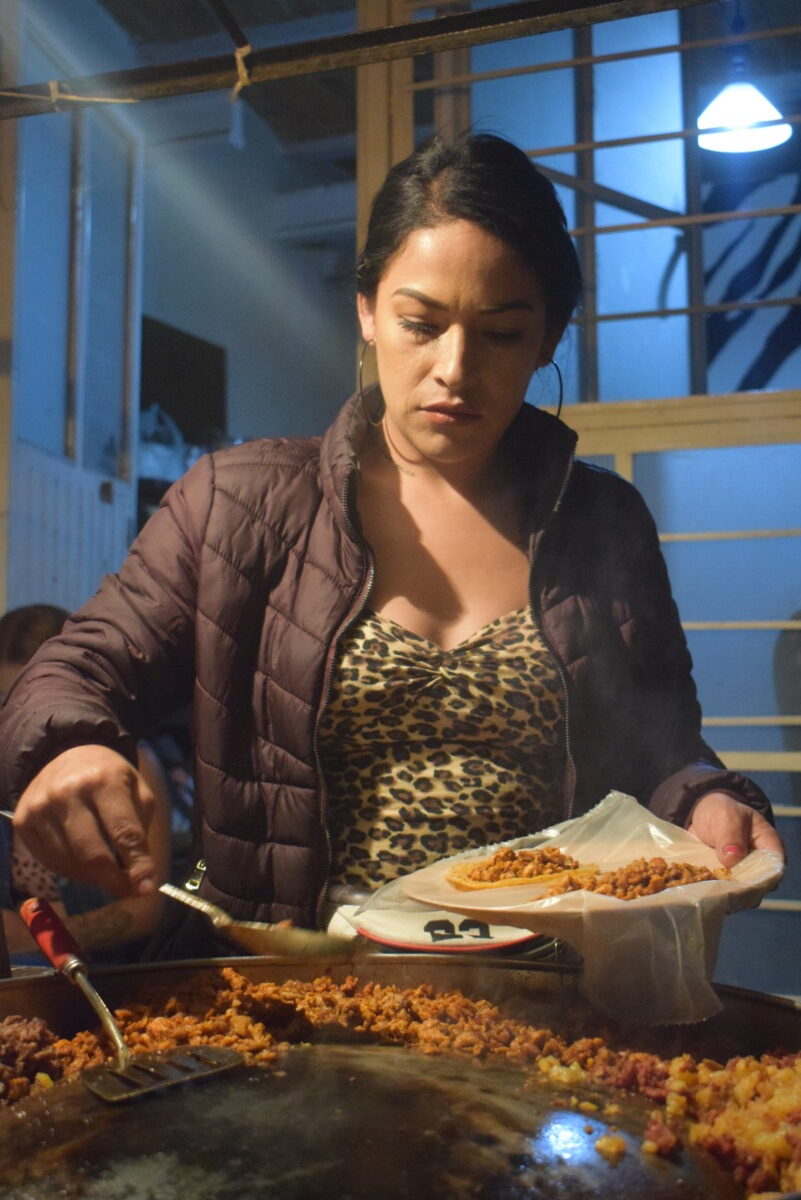
Selling tacos with the adobo recipe inherited from her ex-husband.
Diana’s daily routine consists of getting up in the morning to take her three children to school, then she takes advantage of the trip to order tortillas, buy meat and vegetables at the Chapala market.
After running the errands, she has to pick up the children from school, so Diana barely has enough time to prepare lunch for her two boys and a girl.
Her workday starts around three in the afternoon: chopping onions, cilantro and radishes, preparing the marinade, cooking the meat, vegetables and preparing the sauces. This is something Diana does five out of the seven days of the week with the help of her children.
What convinced Diana to dedicate herself to selling tacos was the ease of taking care of her children while working in front of her house. Today, Diana continues to sell adobada and papa con chorizo tacos from Saturday to Wednesday starting at 8:00 in the evening in the neighborhood of La Purisima, on Miguel Martinez Street, in front of the house marked with the number 477.
However, the low season and the increase of prices in basic foods have forced her to look for other sources of employment to help her to continue with the family tradition of selling tacos.
Translated by Sydney Metrick
Fire severely damaged Guadalajara’s famed Mercado San Juan de Dios
Firetrucks battle blaze at Mercado San Juan de Dios in the early morning hours. Photo from governor’s office video broadcast by Grupo Reforma.
Editor. Guadalajara firemen and Jalisco Civil Protection personnel were mopping up the heavily damaged Mercado San Juan de Dios this afternoon a after they brought the raging fire that began early this morning (31 de marzo) under control The fire was first reported at 2:30 am, and according to Mayor Palo Lemus, and multiple units of the Guadalajara Bomberos and the Jalisco State Civil Protection and Fire Department responded to the report of a fire possibly in the kitchen areas (later attributed to a diablito connector used to steal electricity shorting out.). No one has been reported injured.
Mercado San Juan de Dios, designed by Alejandro Zohn and opened on December 30, 1958 in Central Guadalajara, is the largest indoor Market in Latin America with a total area of 4,000 square meter and 2980 vendor stalls.
The fire quickly spread to all four levels of the emblematic building, affecting a wide range of merchants, including clothing, shoes, arts, crafts and food. As of this afternoon 384 stalls in the mercado were reported destroyed (later raised to an estimated 430 by Civil Protection officials), according to reports from people on the scene in a video posted by Grupo Reforma. This number has not been confirmed by Laguna or official sources and may be much higher.
Javier Mina Avenue along the side of the mercado was closed as of 6:30 am and had not completely reopened as of 1:00 pm as fire crews were still mopping up and assessing the damage and the dangers in the smoking building.
Victor Roldan, General Director of the Jalisco State Civil Protection and Fire Department noted that over 300 personnel and 80 vehicles eventually were used in extinguishing the blaze. While no official assessment of damage was available as of 1:00 pm, Roldan told media that the building was not totally destroyed. Merchants were not allowed into the building because of the danger of spot fires and structural collapse, but many gathered around the security perimeter set up by fire and police, telling on-scene media that their entire livelihood may have gone up in smoke.
Arranca operativo ‘Vacaciones Seguras’ de Semana Santa y Pascua 2022
El operativo busca reducir riesgos mediante la prevención de accidentes en carreteras, centros de recreación y el hogar. Foto: SSJ.
Redacción.- La Secretaría de Salud Jalisco (SSJ), a través del Consejo Estatal para la Prevención de Accidentes (CEPAJ) y la Dirección General de Salud Pública presentaron el operativo “Vacaciones Seguras” en el periodo de Semana Santa y Pascua 2022, que tendrá lugar del 08 al 17 de abril, con la intensificación de vigilancia para reducir riesgos a la salud por percances en el hogar, la vía pública, las carreteras y los centros de recreación.
Las lesiones y muertes provocadas por accidentes se incrementan en los periodos vacacionales, por lo que es 90 por ciento prevenible si se mantienen las alertas en el hogar, la vía pública y los centros recreativos, sostuvo el coordinador operativo del CEPAJ, José Parra Sandoval.
“La exposición a factores de riesgo que provocan accidentes se incrementa hasta en 20 por ciento durante el periodo vacacional de primavera, por lo que se hace un llamado a la población para prevenirlos y disfrutar de manera segura los días de descanso, así como para que se esfuercen por la autoprotección”, agregó en rueda de prensa virtual realizada el pasado cuatro de abril.
Parra Sandoval dijo que el objetivo, en coordinación con el Sistema de Atención Médica de Urgencias del Estado de Jalisco (SAMU), es reducir los riesgos mediante la prevención y la atención oportuna de los diferentes percances en la Semana Santa y de Pascua.
En este sentido, el funcionario compartió el panorama registrado en los años previos. Durante los años 2020 y 2021 el CEPAJ registró un total de 74 y 77 muertes por accidentes, respectivamente, durante dicho periodo vacacional.
“Debemos de ser muy previsores en las tres áreas de alto riesgo donde se puede incrementar de 15 a 20 por ciento la mortalidad por accidentes, que son la vía pública, hogar y centros de recreación”, principalmente, enumeró el funcionario.
Algunas recomendaciones incluyen: al salir a carretera respetar los límites de velocidad, evitar el consumo de alcohol y evitar conducir cansado o sin cinturón de seguridad. En casa mantener a los niños vigilados en todo momento y evitar que jueguen en la cocina; y en los centros de recreación tener en cuenta que nadar en presas, lagunas, ríos y lugares donde no hay vigilancia, puede ser peligroso
PARA PREVENIR ACCIDENTES
Al conducir
- Utilizar siempre el cinturón de seguridad y las sillas porta infantes.
- Respetar los límites de velocidad.
- Evitar el consumo de alcohol al conducir.
- No usar distractores.
- Dar prioridad al peatón y al ciclista.
En los centros vacacionales
- Ubicar el puesto de emergencias del lugar.
- Si se viaja con niños, hacer todas las actividades junto a ellos y mantenerlos bajo supervisión.
- Evitar correr junto a albercas o pisos mojados.
- Tener en cuenta que nadar en presas, lagunas, ríos y lugares donde no hay vigilancia, puede ser peligroso.
- Si se realizan deportes extremos, hacerlos con el equipo necesario y con una empresa establecida.
En la calle o en lugares públicos
- Caminar por la banqueta.
- Cruzar la calle en las esquinas y en pasos, puentes o semáforos peatonales.
- Antes de cruzar voltear a ambos lados de la calle.
- Llevar a los niños de la mano y lo más alejados al arroyo vehicular.
En el hogar
- Mantener a los niños vigilados en todo momento y evitar que jueguen en la cocina.
- Guardar medicamentos y sustancias químicas bajo llave o en repisas altas, así como en sus envases originales.
- Poner especial cuidado cuando los pisos están mojados.
- Tener materiales antideslizantes en las bañeras o regaderas para reducir el riesgo de caídas.
- Evitar tener objetos en el suelo con los que se pueda tropezar.
- Dejar bien tapados pilas y aljibes.
- Vigilar a los niños cuando jueguen en tinas, albercas o inflables.
- Mantener en buen estado los enchufes y tapados si no se utilizan.
Mexican rock:
Gloria Rios, an American-born actress and singer, is often credited with introducing rock & roll music into México, performing in 1944 from Texas and recording in 1955 with various orchestras. She settled in with Mario Patrón and his Estrellas del Ritmo band, performing and recording covers of songs by Bill Halley and Elvis Presley.
She also recorded «La Mecedora» in 1956, which was said to be the first original song of Mexican rock & roll, although many rock historians also say that first rock and roll record ever recorded in México was “La Cama de Piedra” by Pablo Beltrán Ruíz in 1956 followed two months later by later Luis Marquez’s “Let’s Bop”.
These were not rock bands as we know them today – they were orchestras that played jazz, swing, and the “new music” with a high tempo 4/4 beat – songs like Rios’ “Jazzeando”, a fast tempo be-bop jazz tune.
The swing/jazz/rock orchestras quickly gave way to bands like Los Lunáticos in 1956 , Los Teen Tops and Las Mary Jets – an all-female Mexican Rock band formed in 1959, predating the first American female rock band Goldie & the Gingerbreads in 1964.
But unlike in the US where rock became the dominant – and highly profitable – music form until displaced by rap and hip hop, rock was repressed in México. The repression impulse was always there in a conservative society, but the 1971 two-day “Mexican Woodstock” Festival Rock y Ruedas de Avándaro, with nudity, drugs , sex and anti-government songs (imagine that?!) led to the government restricting rock music publishing and airplay.

But rock and roll cannot be held down for long, even by the Mexican government, so by the 1980’s “Los Urbanos” bands with a Bob Dylan-like folkloric style known as música rupestre, and Mexican British Invasion bands like Maná were dragging the country back into the rock revolution, centered in Monterrey.
Monterrock , a stadium-scale, anthem- style rock that sways the masses. Monterrey bands like Kinky, The Warning, Panda and many others took over Mexican arenas and stages everywhere and soon moved to Latin America and the US, and generated a second rock revolution throughout Mexico.
All of that is the foundation for the rock scene in México today which is huge, vibrant, experimental, and thrilling to watch grow and evolve. Modern Mexican rock bands like Hello Seahorse, Zoe, and Insite are popular worldwide. On the cutting edge are Mexican post-rock bands like the Guadalajara-based The Wohl Band, blending dream rock, British shoe-gaze and alt-rock into new forms. And there are the nascent upcoming bands we see here in Lakeside like Mary Island and Alfonsina.
With that rich history of Mexican rock, I am very interested in seeing the portrayal of the 60’s music at the DIF-fund raiser this Friday at the Hotel Real Chapala. Will the songs be covers of Gloria Rios, Los Lunáticos, Los Teen Tops and Las Mary Jets, or will they be straight Bill Halley and the Comets, The Drifters, and Isley Brothers. Whichever, it will be music made to dance and a lot of fun.
Governor of Jalisco announces investment of 213 million pesos for four projects in Chapala
Jalisco Governor Enrique Alfaro Ramírez together with Chapala President Alejandro de Jesús Aguirre Curiel during the dedication of the 16 kilometers of bicycle lanes in Chapala, in front of La Milagrosa park, at the entrance to the municipal capital. Photo: Jazmín Stengel.
Jazmín Stengel(Chapala).- Jalisco governor Enrique Alfaro Ramírez announced an investment of more than 213 million pesos for four projects during his working tour of Chapala on March 25, 2022. He also inaugurated the Chapala – Jocotepec bike path, toured the 63.32 million pesos rehabilitation of the Auditorio de la Ribera and promised funds for the rehabilitation of the Santa Cruz de la Soledad highway to Ixtlahuacán de los Membrillos.
During his tour he announced the upgrades to Francisco I. Madero Avenue in the municipal capital and, and the Telesecundaria ‘Guadalupe Victoria’ school in Santa Cruz de la Soledad, and more facilities for the Instituto Tecnológico Superior Mario Molina’ campus.
The Instituto Tecnológico Superior will receive 40 million pesos to build 18 new, fully equipped classrooms, multi-purpose rooms and a library. In addition, Governor Alfaro promised to have the Jalisco High Speed Internet Network ready in the next three weeks. This network will also be implemented at the ‘Guadalupe Victoria’ high school.
During his visit to the Telesecundaria in Santa Cruz de la Soledad, the governor said he had spent $12.9 million pesos on the new infrastructure and promised those present to be able to inaugurate the new classroom modules.
Governor Alfaro Ramírez inaugurated the 16 kilometers of bicycle lanes that were built in the municipality of Chapala as part of the state program MiBici. The work that began in 2019, was carried out in two stages with a complementary project that had a cost of 87 million pesos.
The bikeway, which starts in the municipal capital of Chapala and ends at the junction of the Jocotepec beltway along 24.3 kilometers, had a total cost of 211 million pesos, said Enrique Alfaro.
The Governor also announced an upgrade to the entrance to Chapala at Francisco I. Madero Avenue, a 900 meter-long project designed in multiple stages to avoid affecting traffic at Chapala’s busiest intersection. He showed a video detailing how the project would look.
The project has three main objectives. The first is to improve the roadway, replacing the current cobblestones with hydraulic cement and renovating the water and sewage networks that run underneath it. The second is to arrange the parking lot in parallel so that cars «no longer back up» along the avenue, thus avoiding traffic mishaps and maintaining two traffic lanes.
Finally, the project will improve the image of the city’s entrance by installing a fountain on the walkway, almost in front of the San Francisco de Asís parish. It will also extend the bicycle path to the boardwalk, turning the avenue into a «shared street», and modernize the existing outdoor furniture and add new trees.
The 17.5 million-peso cost for the first stage has been secured and the work will begin after the Holy Week-Easter vacations. Although no budget for the total work was disclosed, Chapala Mayor Aguirre Curiel estimated a total cost of approximately 80 million pesos.
A percentage of the still unconfirmed budget will be given to the avenue’s merchants so that they can also improve their image by making it more uniform. This work has been delegated to the Chapala City Council to begin the organization and work with merchants. The construction will be managed by the Secretariat of Infrastructure and Public Works of the State (SIOP).
Translated by Patrick O’Heffernan
San Antonio Tlayacapan’s first fishing tournament tracts 60 anglers and an enthusiastic audience
In the center, the three winners of the tournament. From left to right: Juan Márquez, first place, José Luis Reyes, second place and Wesley García, third place. Photo: Sofía Medeles.
Sofía Medeles (Ajjic).- Sixty fishermen competed in the first fishing tournament in San Antonio Tlayacapan in front of dozens of spectators on March 20.
The event began around eight o’clock in the morning, as the competitors lined the shores of the boardwalk, casting their lines until two o’clock in the afternoon when the awards ceremony was held. The tournament was multi-species; all fish caught were counted in the sum of the total length of all fish landed.
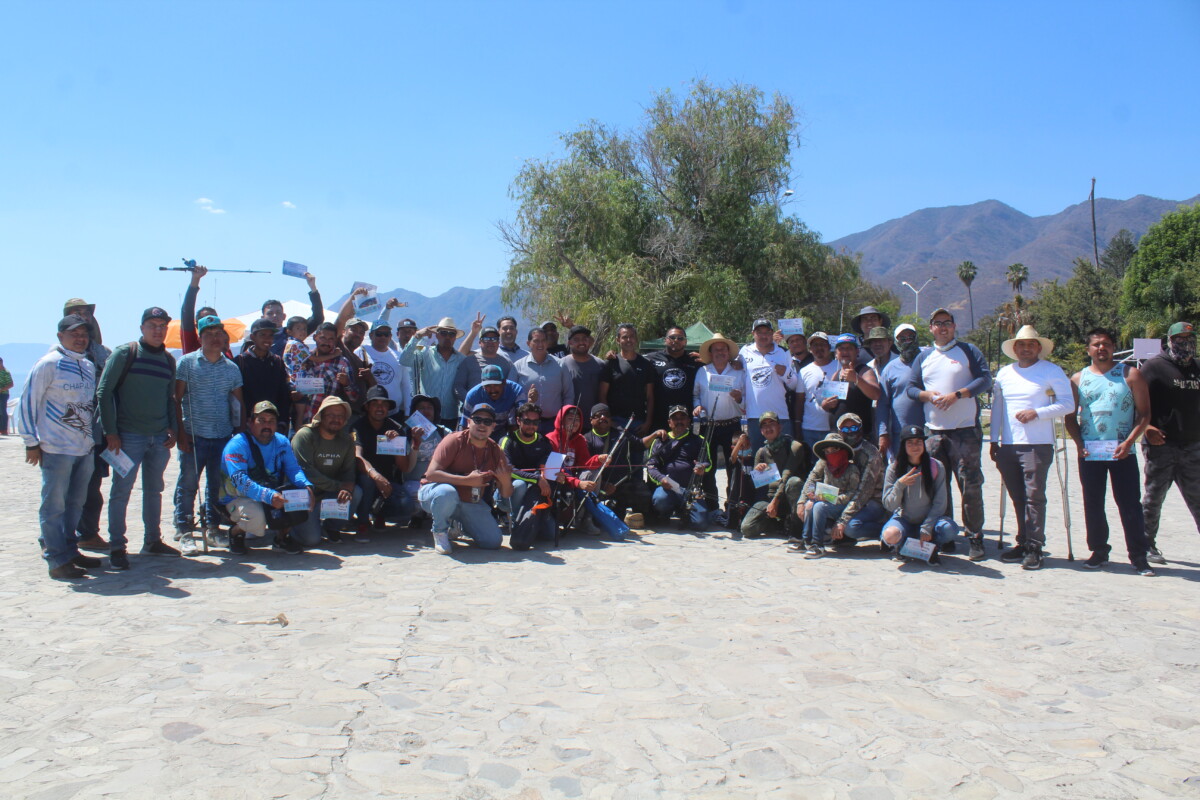
Participants and organizers of the first fishing tournament in San Antonio Tlayacapan. Photo: Sofía Medeles.
First place went to Juan Márquez, who was the only one who met the quota of five fish and received 2,400 pesos. José Luis Reyes came in second place with a prize of 1,800 pesos; while third place went to Wesley García, who also won the category of the shortest fish, or «la cortona», and received fishing equipment and a fishing rod. Román Becerra won the ward for the the longest fish, or «largona».
The tournament was organized by the delegation of San Antonio, and the Municipal Sports Council (COMUDE), in coordination with Pescafina GDL (establishment selling fishing tackle) and Chapalico Bass.
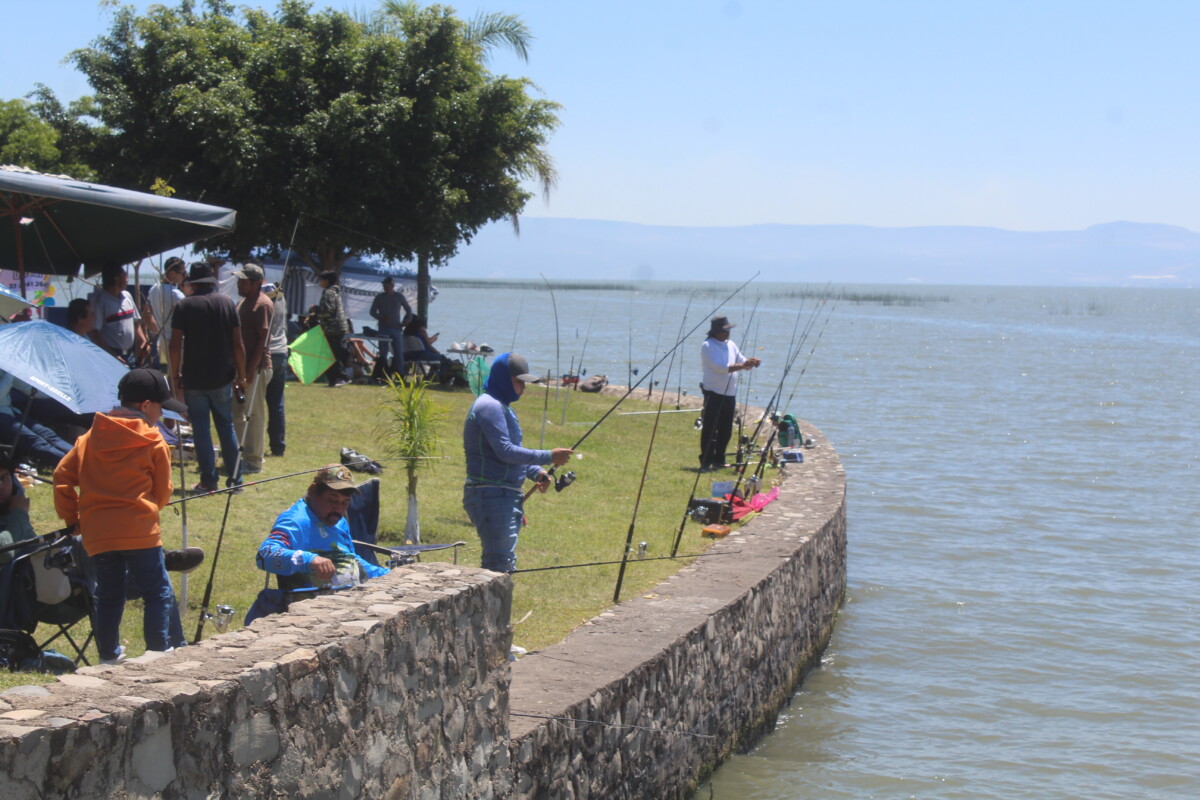
Participants lined the shore of the malecon from eight in the morning until two in the afternoon. Photo: Sofía Medeles.
«It was a quiet tournament, the fishing was a little slow, but it was a pleasant and entertaining experience for the participants, and the people supporting them,» added Miguel, a participant from San Juan Tecomatlán.
Oscar Paredes, from Pescafina GDL, said that this is the first tournament of many that will be held in the town. He also added that, in the next tournaments, he will improve the approach and planning in the lake, so that the fishing takes place without incidents and obstacles such as trammel nets will be removed.
Finally, he thanked the municipal police, civil protection, and authorities who helped organize the event, for maintaining order and safety for participants and attendees.
Translated by Patrick O’Heffernan
Free workshops and community dining room offered by Casa de Asistencia
The various workshops offered at the Casa de Asistencia in San Juan Cosalá are free of charge. Photo: Courtesy.
Alma Serrano (San Juan Cosalá).- The Padre Adalberto Macías Llamas Social Assistance House in San Juan Cosalá, provides daily food to more than 60 elderly and low-income people. The government institution, which began operating in October 2020, also offers free workshops for children and young people.
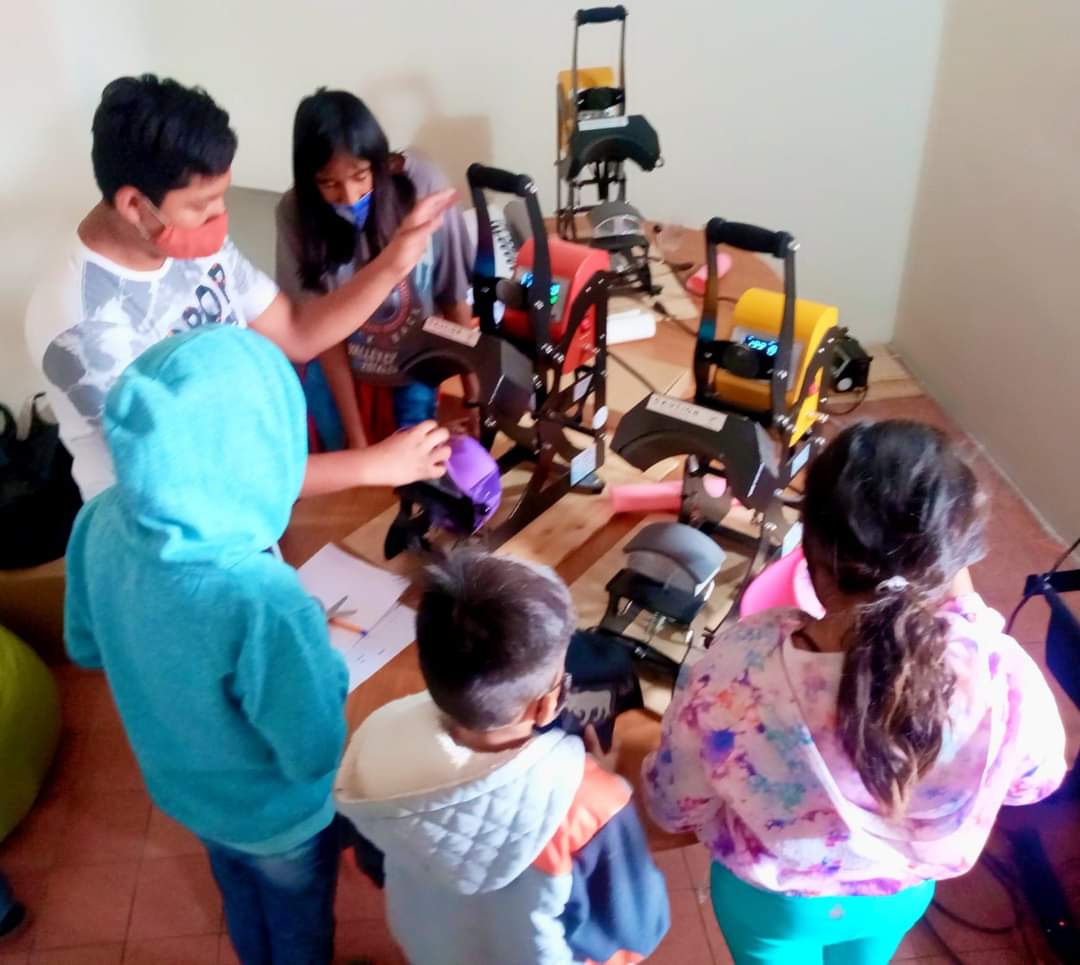
Custom printing of products such as t-shirts, mugs and caps, is one of the workshops offered. Photo: Courtesy.
On Mondays, English classes, custom product printing and physical activity are offered. On Tuesdays there are painting, stone, pottery and music workshops. Jewelry and headband making are taught on Wednesdays, while on Thursdays there are piñata making, music and psychology workshops. Finally, painting and drawing are offered on Saturdays.
For more information about the activities, the Casa de Asistencia Social Padre Adalberto Macías Llamas, located next to the plaza, is open from 9am to 9pm.
Translated by MaryAnne Marble
Reconstituted Reciclaje Ajijic committee assembled after agreement
Volunteers sorting recyclable material at the Ajijic Recycling Center in West Ajijic.
Patrick O’Heffernan (Ajijic).- After years of neglect by the former administration, recycling in Ajijic is back on track, thanks to former and now current Committee Chairwoman Esther Prada and cooperation from the new Chapala Director of Ecology, Lic. María Guadalupe Vázquez Solano. The citizens committee that handles recycling for Ajijic has been appointed, with all by one position, secretary, filled. The committee manages the recycling center on the Carretera in West Ajijic, and handles some pickup of recyclable materials from the blue barrels.
The center’s work has been slowed for some time due to the lack of a compactor to compress processed materials before they are trucked to Guadalajara for sale. Reciclaje Ajijic operates out of a former military training center now owned by the government. Materials are delivered to the center, sorted, cleaned and packed for transport. While the committee owns a compactor, bought with donated funds, the previous administration was not helpful in connecting electricity to the center to operate it. Appointing a new committee was the first step toward CFE assigning an address and connecting power to the compactor.
Prada was able to negotiate the committee’s formation as part of her drive to obtain commitments from the municipality that they will continue support for the center and guarantees that equipment installed at the center will remain with Reciclaje Ajijic if a new administration is elected. In a meeting with Ecology Director Vázquez Solano., Laguna found her to be enthusiastic about the program and to systematically seeing the process through with Reciclaje Ajijic and possibly expand recycling to other delegations
Reciclaje Ajijic is asking for volunteers to assist them in processing the backlog of materials at the center. Those interested can contact Reciclaje Ajijic volunteer coordinator Colleen Kissinger at reciclajeajijic@gmail.com.
Relatives honor murdered policeman
Relatives of the security officer walked through the delegation of San Juan Cosalá as a tribute on March 21. Photo: Courtesy.
One of the two Jocotepec police officers killed in the confrontation with armed persons on March 10 was finally honored more than 10 days after he died. Relatives of Andrés Inclán Zamora paid tribute to his service as a security officer on March 21.
The municipal president, José Miguel Gómez López, postponed the official tribute due to violence in the municipality since holding an event with crowds of people was considered “high risk.”
Around five o’clock in the afternoon on March 21, Inclán Zamora’s relatives, people from the community and some of his colleagues at the police station celebrated the memory of the murdered policeman. The emotional event, which lasted more than an hour, began on Porfirio Diaz Street in San Juan Cosala. It was attended by about 70 people who, in tears, said goodbye to their friend, brother, family member, father and husband.
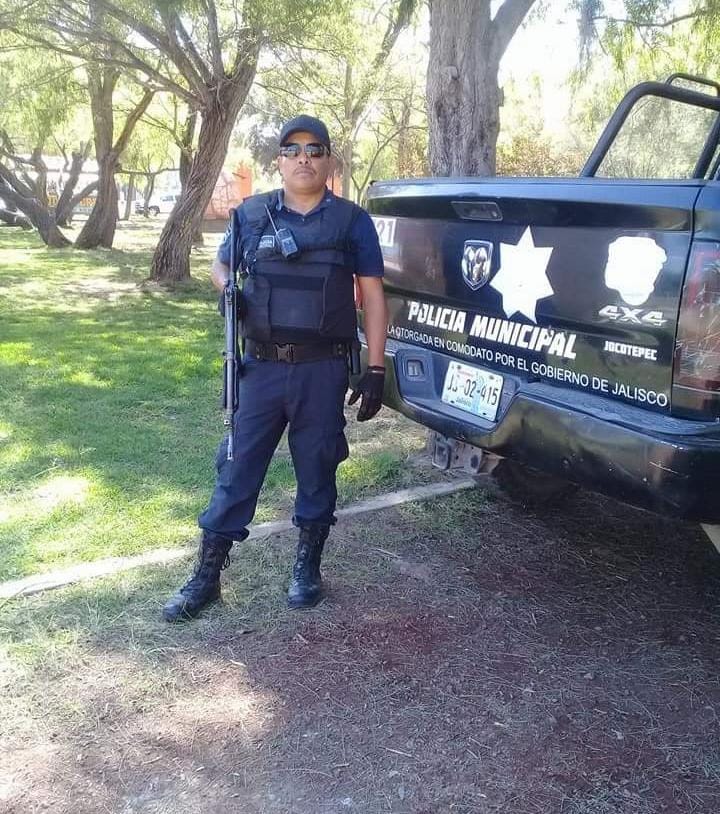
Andrés Inclán Zamora, a 45-year-old policeman, was killed in the clashes on March 10. Photo: Courtesy.
Accompanied at all times by police officers and escorted by a marching band, the relatives of Andrés Inclán recalled with nostalgia and pride stories about the life of the passionate policeman. «He was the oldest of 11 siblings, but he always took care of me and my sisters, he was very good,» said one of his sisters. She added that Inclán Zamora began his police career more than 10 years ago. Although he served as an officer off and on, «it was something he always liked, there is no doubt about that.»
Although his family said that the municipality took care of approximately 60 percent of the funeral expenses, they regretted the position and «silence» of the municipal authorities.
Translated by Elisabeth Shields
© 2016. Todos los derechos reservados. Semanario de la Ribera de Chapala

